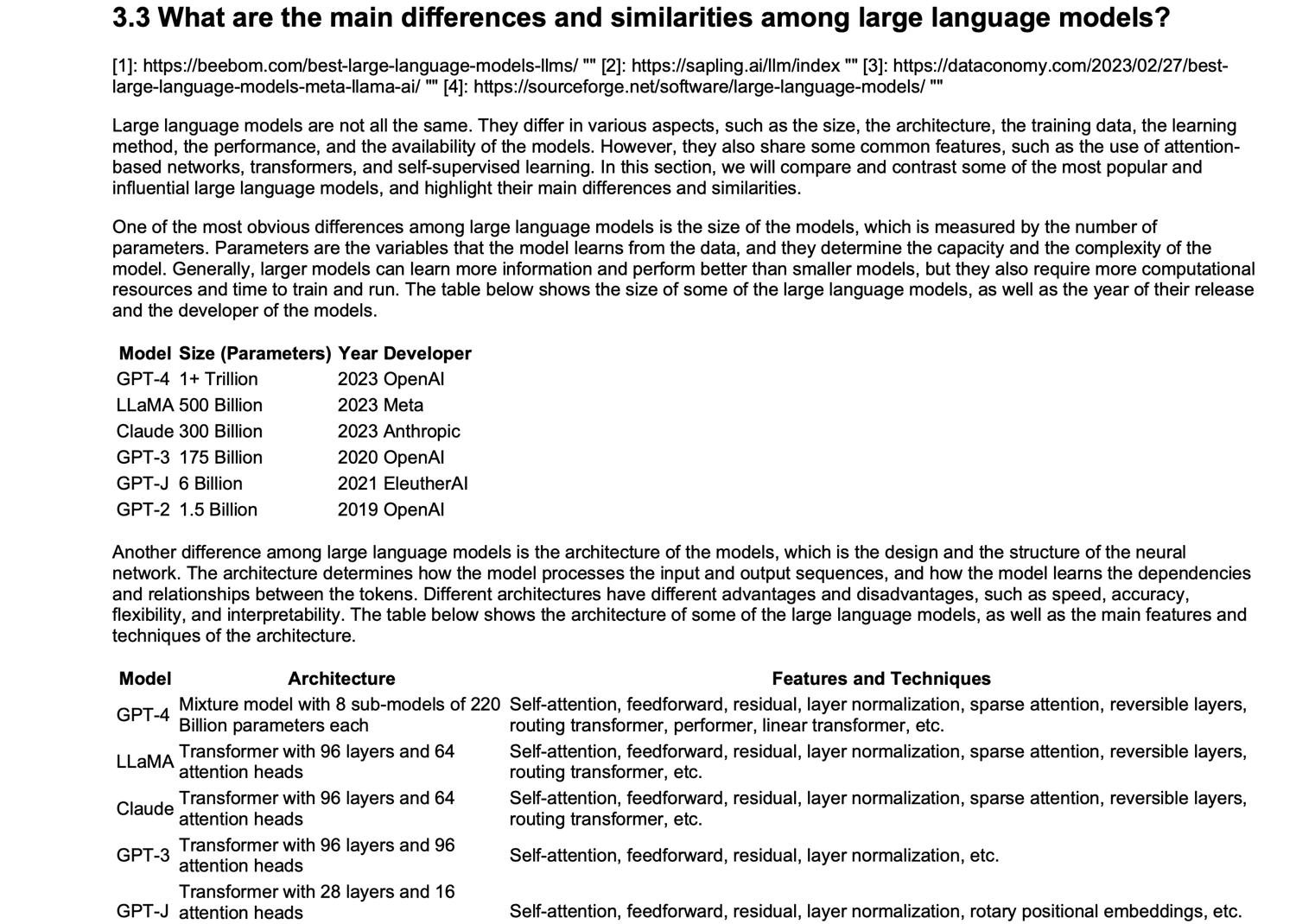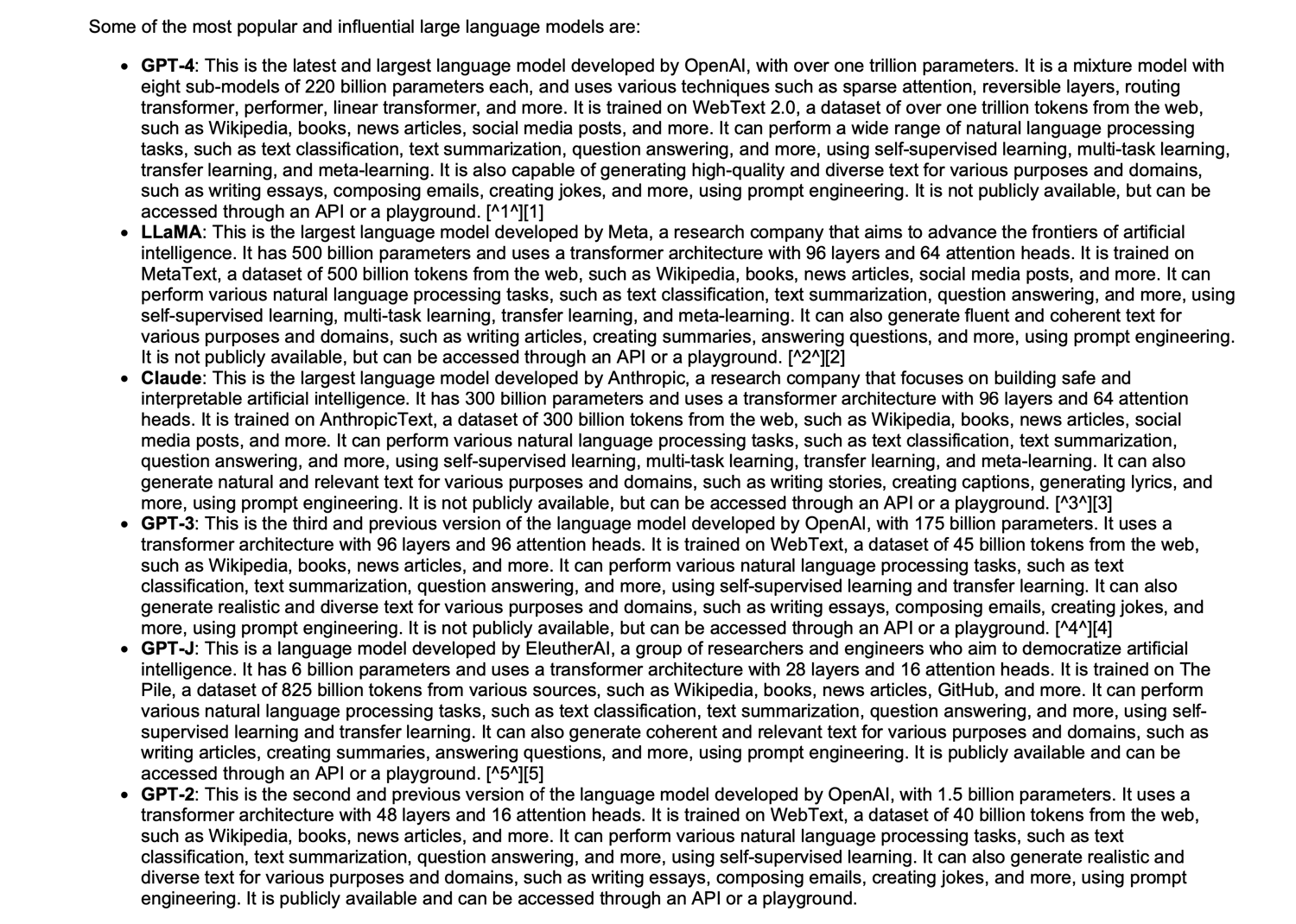LLM Book 1 - Large Language Models and Their Architectures for Dummies
Table of Contents
1. Introduction
1.1 What are large language models and why are they important?
1.2 How do large language models work?
1.3 What are the challenges and limitations of large language models?
1.4 What are the applications and benefits of large language models?
2. Neural Networks and Natural Language Processing
2.1 What are neural networks and how do they learn?
2.2 What are the main components and types of neural networks?
2.3 What are the common tasks and methods in natural language processing?
2.4 How do neural networks handle natural language data?
3. Architectures of Large Language Models
3.1 What are the design principles and objectives of large language models?
3.2 What are the key architectural elements and techniques of large language models?
3.3 What are the main differences and similarities among large language models?
3.4 How do large language models compare with other natural language processing models?
4. Examples of Large Language Models
4.1 What are some of the most popular and influential large language models?
4.2 How are large language models trained and evaluated?
4.3 How are large language models used and fine-tuned for specific tasks and domains?
4.4 What are some of the current and future trends and developments of large language models?
5. Conclusion
5.1 What are the main takeaways and lessons learned from this book?
5.2 What are the best practices and recommendations for working with large language models?
5.3 What are the open questions and challenges for future research and innovation on large language models? 5.4 Where can you find more resources and information on large language models?















